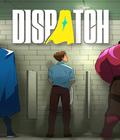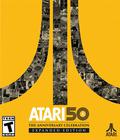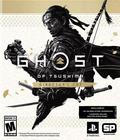Upon its release on the PlayStation 4 in 2020, Ghost of Tsushima was easily one of the best titles on the system, if not across all gaming systems. It was a downright exquisite game and was almost undoubtedly the result of an entire team of talented folks putting a hell of a lot of work into it. I'd wondered how good the game could look and play on the PC, but as the years ticked by, it seemed as though a PC version was becoming less and less likely. Good things do in fact come to those who wait; Ghost of Tsushima is now on the PC, and it is very good.
The game takes place on the Japanese island of Tsushima during the Mongol invasion that took place in the late 13th century. You play as Jin Sakai, a samurai and the lone surviving member of Clan Sakai. After witnessing the death of Jin's father, he became a ward of Lord Shimura, his uncle and the overall leader of the island. Lord Shimura led the samurai forces against the Mongol threat in an ill-fated battle that ended with Jin left for dead and Lord Shimura captured by the Mongol forces. Led by General Khotun Khan (cousin of Kublai, grandson of Genghis), the Mongols quickly take over a majority of the island.
Jin is brought back to health by Yuna, a woman who needs his help in rescuing her brother from the Mongols. After attempting to rescue his uncle and nearly perishing a second time, Jin realizes that to fight the Mongols, he must use stealth and guerrilla tactics. This clashes with the sense of nobility and honor that his uncle instilled in him, and Jin must reconcile and balance those competing notions while trying to save his people and rid the island of the Mongol threat.
As much as the narrative occasionally dwells on this balance, there isn't some sort of alignment bar to manage. You can just as easily stroll up to an enemy camp with all the big katana energy in the world and challenge them to a duel as you can sneak into their fortifications and slit their throats. The game doesn't particularly care which tactic you choose, and I find that to be freeing; sometimes you want to play like it's a stealth puzzle game, and other times you just want to roll out and go full Kurosawa against a literal horde of Mongols.
Speaking of which, the entire game is a love letter to Kurosawa's films and to the history and culture of samurai. Every shot in every cut scene has some level of artistic flourish, and I dare you to find an area of the game that isn't stunning in its art direction. This game originally came out four years ago, but I maintain that by the sheer attention to detail, it is one of the most visually impressive games you can currently play. Find yourself in a duel to the death with another swordsman, and you'll be treated to a fantastic series of shots of swords being flicked from their scabbards, and the resulting fight becomes a deadly dance amidst a picturesque and reactive environment.
This is an area where the PC version of the game earns its keep. You can run the game at any frame rate you'd like, at resolutions including the usual suspects all the way up to 48:9 triple monitor support. If you'd like to boost those frames, you can choose between DLSS 3, FSR 3, and XeSS support. If you'd like to play using mouse and keyboard as opposed to using a controller, I'm happy to report that it works quite well. The original game was developed by Sucker Punch, and while the PC port is being done by Nixxes Software, you'd be hard-pressed to find a place where this port has any rough edges.
Throughout the first act of the game, you are limited to the southern third of the island, with each subsequent act unlocking the next third to the north. The world is littered with things to do, such as enemy camps to eliminate, and main and side-quests to complete. Find a fox den and follow it to make progress toward unlocking a new charm slot, or a bamboo strike to mash the button prompts in the correct order to increase your resolve. Hot springs increase your maximum health, while some spots let you compose a haiku from pre-selected options and earn yourself new headgear. It's easy to get lost flitting around the map and completing these, while occasionally dispatching the odd Mongol patrol along the way.
Combat in the game is somewhat simplistic, but it does demand a level of timing. Block an enemy's attack at the perfect time, and your parry will send them off balance; using heavy attacks break through an enemy's block. Enemy attacks that have a red glint must be dodged instead of blocked, and you can then follow up with some strikes of your own. There are no stamina or stagger bars to manage, and this is an area where I feel like the combat could be meaningfully improved. Don't get me wrong; the combat is stylish and fun, but it's not all that deep, and you see most of what it has to offer before you complete the first act.
The stealth aspect is similarly simple yet stylish. You can crouch to sneak around and reduce the range and speed at which enemies will spot you. Get close to them, and you can assassinate them, but without the ability to move bodies, you'll want to do so in a spot where a patrolling Mongol won't find them. Later, you can unlock the ability to chain assassinations or to take out someone who happens to be standing on the other side of a door. However, the stealth gameplay is something that you experience fully before you get much further than about one-third of the way into the game.
That is really one of my few real complaints with the game. If you take your time and complete a bunch of the side content in act one, it can take you about 10-12 hours to reach act two, but other than a location change, it's effectively all the same kind of content again. It's solidly great content, but a level of sameness sets in quite early, and I wish that the game somehow deepened the combat and the stealth gameplay in a way that isn't so front-loaded.
You unlock and upgrade various armors as you play, which have their own benefits, such as improving your durability in combat or makes you sneakier. You can unlock different color schemes for the armors and different looks for your swords, and since headgear is purely cosmetic, you can make Jin look a lot like whatever intimidating samurai or ronin you want him to be. You collect various materials and supplies as you play, which allows you to further upgrade your weapons and armor.
Jin has plenty of options when it comes to ways to tilt a fight in his favor. Ranged weapons include two different bows, but you can also throw wind chimes to lure enemies into a more favorable position to take them out. In the middle of a fight, you can throw kunai to damage and stagger enemies, sticky bombs to take them out, or smoke bombs to blind their vision and give you the upper hand. As you kill enemy leaders, you unlock new fighting styles that are better against various types of enemies, and you can switch between them on the fly.
As you gain "experience," you gain technique points that can be spent to improve Jin's abilities. Such points can unlock a new facet or move for a particular stance, add another enemy to the assassination chain, or add the ability to dodge roll. If you're a fan of dueling enemies, you might want to spend a point to make it so there's a chance that winning a duel will cause some enemies to cower and flee. You are free to spend the points in the aspects of the gameplay that you enjoy the most.
The PC version of Ghost of Tsushima is simply the definitive version of a game that was already stellar when it landed on the PlayStation 4. It can't help but be gorgeous at just about every turn, and gripes about the sameness aside, the gameplay is extremely well polished. Games like this only exist when absolutely everyone involved pour a lot of passion into it, and it continues to be one of my favorites with this excellent PC port. Whether you prefer a controller or a keyboard and mouse, and whether you like the idea of sneaking around or of shouting your challenge to any Mongol who dares to cross you, Ghost of Tsushima delivers a memorable experience.
Score: 9.4/10
Reviewed on: AMD Ryzen 7 5800X3D, 32 GB RAM, NVidia RTX 4070 Ti
More articles about Ghost Of Tsushima











 Ghost Of Tsushima is a sprawling, open-world samurai game set in feudal Japan where you play as a battered samurai, fighting back against overwhelming odds.
Ghost Of Tsushima is a sprawling, open-world samurai game set in feudal Japan where you play as a battered samurai, fighting back against overwhelming odds.

































